PARIS 2008 MOTORSHOW - THE NEW QUATTROPORTE
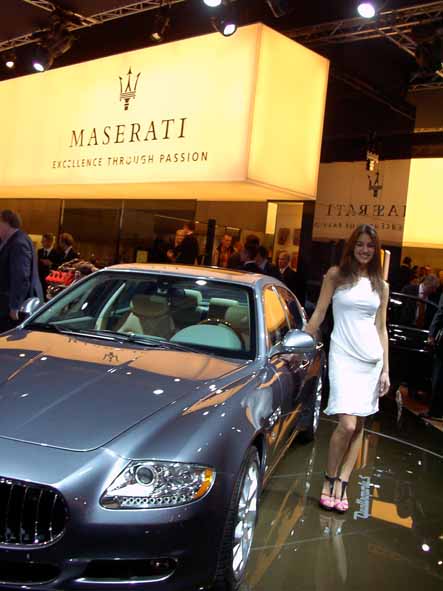
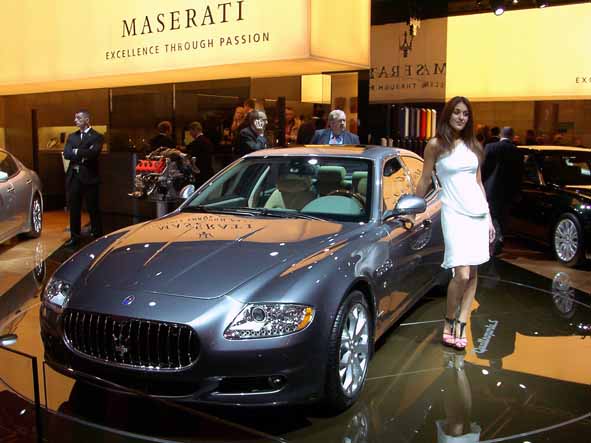
The Quattroporte marks another milestone in the renaissance of Maserati's brand identity, embodying the values traditionally associated with the marque and, in the case of this particular model, preserving styling continuity with the classic Maserati sedans of the same name, from the first 1964 Quattroporte designed by Frua to the Quattroporte III used by the Italian Head of State Sandro Pertini in 1984.
When the Maserati Quattroporte styled by Pininfarina was presented at the 2003 Frankfurt Motor Show, the unique balance between the style of a luxury sedan and unparalleled driving dynamics created a new market segment in the automobile sector, that of the “Luxury Sports Sedans”.
After five years of success, with over 15,000 cars sold and 47 international awards won, the New Quattroporte range has some interesting new features aimed at combining the image of the car in its ultimate expression with the new, more powerful 4.7 litre 317 kW (430CV) engine.
Designed by Pininfarina, the Quattroporte has been reinterpreted with a more modern style in line with the GranTurismo, its nature and charm are that of an extraordinary car offering the ultimate in dynamic performance.
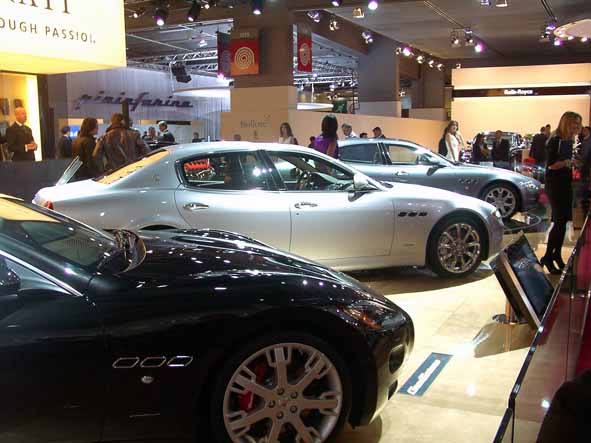
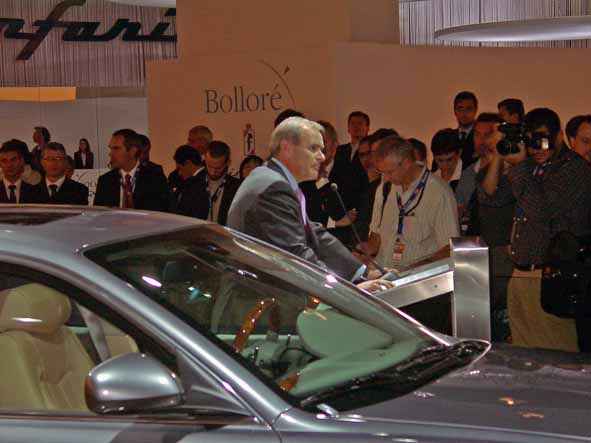
The new Maserati Quattroporte, today more than ever, is the ideal synthesis of two seemingly different souls: that of the luxury sedan and that of the grand tourer.
The two souls of the car are embodied in two versions which constitute the new Quattroporte range:
• Quattroporte
• Quattroporte S
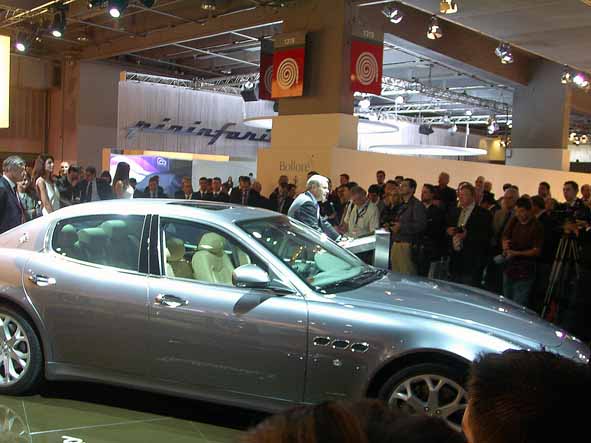
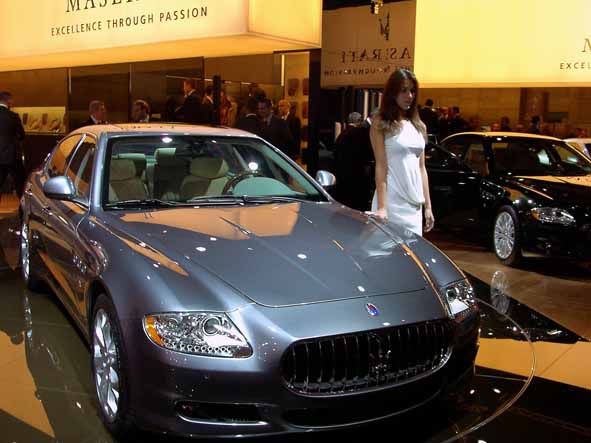
The first has an 8-cylinder 4.2 litre engine and represents the entry level into the Quattroporte world. The second has an 8-cylinder 4.7 litre engine for maximum power and torque, this is the new Maserati flagship.
The cars both benefit from a ZF automatic gearbox with 6-speed hydraulic transmission developed for the best performance and driving comfort and suitably tuned to bring out the very best of the new engine.
The new Quattroporte range makes good use of past experience in terms of suspension and brakes, which represent a point of excellence for the model, offering different systems depending on whether the owner is more inclined towards comfort, or favours a more dynamic driving style.
Both versions achieve optimal weight distribution: 49 % on the front axle and 51 % on the rear. This distribution, obtained by moving the engine back on the front axle, maximises traction and peak acceleration, whilst making the car’s handling extremely stable and balanced.
The new Quattroporte range is the finest example of the Italian concept - “tailor made”. In fact, the personalisation program has been enriched, with an even wider range of colours and woods now available.
Customers are offered a choice of 19 exterior paint finishes, in a number of colour combinations: solid, metallic and pearlescent. An equally wide selection exists for the interior leathers, with a ten-colour palette that puts the Quattroporte at the top of its market segment. Clients can choose from six types of wood and two different lacquers for the personalisation of the interior.
Also noteworthy are the number and expanse of customisable interior surfaces (seats and door panels, steering wheel, dashboard, wood trim, stitching, roof lining, floor mats), allowing each client to "create" a custom car to suit their own personal style from millions of possible combinations (see image).
2 - PININFARINA STYLE
The aesthetic modifications were adopted by Pininfarina to meet technical requirements (a greater cooling area was required for the more powerful engine), technological developments (the use of LEDs for many lighting functions), and aerodynamic improvements (revised airflow at the rear of the car).
The car sits visibly lower on the road, and the main characteristic elements (grille, front and rear lights) are the perfect expression of Maserati style.
The front has a new grille with convex vertical slats which create continuity with the GranTurismo.
The bigger headlights are characterised by an L-shaped LED strip completed by the integrated sidemark that gives the car a characteristic “look”.
On the sides the more prominent under-door moulding covers follow the line of the new bumpers, and the new rear-view mirrors are fully integrated with the car.
During the day the tail-lights’ red border around a white centre, also found on the GranTurismo, is evident, while at night they show a slightly inclined double axis, a distinctive characteristic.
The rear bumper has also been redesigned in the same way as the front.
The wider protective section and the design of the lower part emphasize the “power” of the car.
Inside, the cabin has a new central console with controls grouped closer together and improved ergonomics.
The strong personality of the dashboard remains unchanged, with the same style and exquisite finishing in the central structural part, representing the richest area of the interior with its soft lines and intricate form.
The passenger side of the dashboard is even more sleek thanks to the new, perfectly integrated airbag solution.
New ergonomic features are also available to the driver with even more comfortable seats, a sports grip steering wheel and a storage compartment in the central tunnel.
Wood and leather are combined in the car, adding warmth and elegance to every detail. Clients can also personalise the colouring of plastic details of the dashboard and of the upper part of the interior for a more prestigious and harmonious interior.
The design of the new Maserati Quattroporte, by Pininfarina, confirms a combination of character traits: strength and power are united in a sensual shape, with masterful attention to detail and an unmistakably Italian silhouette.
3 – POWERTRAIN & TECHNOLOGY
3.1 – THE 4.7 L ENGINE
The main technical innovation in the new Quattroporte range lies under the bonnet of the Quattroporte S, where you will find the ultimate evolution of the new family of wet sump engines; the new and more powerful V8, 4.7 litre engine produces 317 kW (430 CV) at 7,000 rpm and a maximum torque of 490 Nm at 4,750 rpm.
With its characteristic red cylinder head covers, the new 4.7 l engine has been specially developed to add more sparkle to the car’s performance and make the Maserati Quattroporte S even more exciting to drive.
The technical solutions adopted on this unit emphasise the qualities shared by all the latest Maserati engines, in terms of prodigious specific power output and rapid rise and fall in rpm. The red line of the 4.7 l engine is at 7,200 rpm.
The Maserati engineers’ meticulous development work has focused on guaranteeing the smoothest possible ride together with the very highest performance.
The engine in the Maserati Quattroporte S is a 90° V8 with a cylinder capacity of 4,691 cc. The timing system has two overhead camshafts per block driven by a control chain, and four valves per cylinder operated by hydraulic tappets. The camshafts on the intake side are fitted with a low pressure continuous phase timing variator, with valve actuation times of less than 0.15 seconds.
The increase in displacement from 4,244 cm3 to 4,691 cm3 has been obtained by increasing the bore and stroke, with particular focus on the engine’s longitudinal packaging, and a ratio between piston bore and cylinder centre distance in line with the leading competitors.
The oversize diameter cylinder sleeves are made of reduced thickness Nikasil-coated steel. With the increased cylinder capacity, the steel cylinder sleeves help keep the weight and dimensions of the engine down, especially longitudinally. This solution makes it possible to ensure that the weight distribution between the front and the rear is unchanged, which is also the case with the automatic transmission.
The single-chain valve gear contributes to the improved longitudinal packaging. It also ensures exceptional engine reliability, the ultimate in silent operation, low friction to the benefit of fuel consumption and the possibility of achieving precise timings that translate into optimised cylinder fill capacity and hence performance.
The crankshaft with 90° cranks and cheeks, fully balanced with a suitable selection of connecting rods and pistons, means a virtually vibration-free engine with that characteristic full-bodied sound, emphasised by the high-flow induction system.
The aluminum crankcase-engine block has five main bearings to ensure a highly rigid structure and low friction losses.
The top of the engine is designed for optimal airflow and cylinder head cooling, for the most efficient induction flow and to effectively cool the induction charge, with a perfectly tuned intake-exhaust pulse. This optimises the volumetric output and improves engine performance.
The cleverly balanced intake and exhaust geometry and the use of continuous phase timing variators on the intake cams, the optimisation of the combustion chamber and setup of the engine produces a torque curve with 82% of the maximum torque available from as low as 2,500 rpm. The car accelerates impressively even in the high gears, making it relaxing to drive especially on motorways and the engine performs to the full throughout the rpm range.
The cylinder heads are also made of aluminium alloy and integrate the secondary air system in the exhaust ports to ensure low emissions. All of the water, oil and secondary airways are cast directly in the engine in a very solid system, resulting in a unit with reduced dimensions and guaranteed quality in the assembly phase, making the engine very reliable.
The integration of the accessories (water pump) with the main castings of the engine, and the solid design of all the elements with thick walls, ensures low engine noise and highly reliable components.
In line with the philosophy of the latest Maserati engines, the 4.7 litre unit also uses a wet sump system, introduced for the first time on the Quattroporte Automatic, and subsequently adopted on the GranTurismo with automatic transmission and on the GranTurismo S. In the wet sump system, the engine oil is collected in an integrated sump at the bottom of the crankcase and circulated by a single oil pump running in an oil bath. This translates into advantages in terms of comfort on the road and the best compromise between comfort and performance.
The BOSCH Motronic ME9 electronic engine management system uses dedicated sensors to supply the control unit with continuous data for processing the parameters on fuel, advance and throttle angle for optimal engine control.
Graph 1
Exhaust/evap emissions and fuel consumption fully comply with the planned Euro 5 regulations for Europe and LEV2 for the US, thanks to the introduction of an innovative perforated metal sheet catalytic converter that combines permeability and reliability.
The performance of the new engine is worthy of a Maserati flagship:
Quattroporte S
• Maximum power: 317 kW (430 CV) at 7,000 rpm
• Maximum torque: 490 Nm at 4,750 rpm
• Top speed: 280 km/h (174 mph)
• Acceleration 0-100 km/h (0-62 mph): 5.4 seconds
3.2 – THE 4.2 L ENGINE
The new Quattroporte is equipped with the famed 90 degree V8 normally aspirated 4,244 cm3 engine featuring wet sump lubrication where the engine oil is collected in an integrated sump at the bottom of the crankcase, a solution that makes the pump unit much quieter and cuts the overall engine noise level.
The V8 produces an exceptional amount of torque, reaching 460 Nm at 4,750 rpm.
The assembly consists of a crankcase and cylinder heads in hardened aluminium silicon alloy, and a crankshaft in refined forged steel running on five main bearings.
The timing system has two overhead camshafts per block on the intake side driven by a control chain, with four valves per cylinder operated by hydraulic tappets. The intake camshafts with continuously variable timing at high pressure have a total actuation time of under 0.15 seconds. They are characterised by a new profile specially designed for the needs of a sedan.
The integrated Bosch ignition and injection systems include a self-diagnostic facility that detects internal malfunctions of the engine control system, to ensure compliance with emission control regulations. The accelerator features electronic "drive by wire" control, and the microprocessor (ECU, Electronic Control Unit) control units interact with the other systems via high speed CAN (Controlled Area Network) line to optimise engine management. All of this translates into exceptional road performance.
The torque curve (see Graph 1, page 12) is smooth and linear: engine speed rises gradually, without abrupt surges, providing high power and constant torque output throughout the entire rev range.
In combination with the automatic gearbox with torque converter, this system guarantees a luxurious ride, while the rev-reducing sixth gear cuts fuel consumption and noise levels. If you like the feel of a manual gearbox, you can change gears by hand with the lever on the central tunnel.
In this case the valve head covers are an elegant and characteristic blue.
The performance specifications set a new benchmark for luxury sedans:
New Quattroporte 4.2 l
Maximum power: 295 kW (400 CV) at 7,000 rpm
Maximum torque: 460 Nm at 4,750 rpm
Top speed: 270 km/h (167 mph)
Acceleration 0-100 km/h (0-62 mph): 5.6 seconds
3.3 - AUTOMATIC TRANSMISSION
3.3.1 – CHARACTERISTICS OF THE AUTOMATIC TRANSMISSION
The automatic transmission of the new Quattroporte range, served by a hydraulic torque converter, makes gear changes precise and fluid but still fast and easy, the best in performance and comfort. True to its sporty soul, the Quattroporte can also be driven manually using the gear lever on the central tunnel, or the gear shift paddles, available as an option. Sixth gear has been optimised to reduce fuel consumption and noise even further during high speed motorway driving.
Thanks to a state of the art collaboration between Maserati and ZF, the hydraulic transmission enhances the V8’s progressive delivery at low-medium revs without limiting its power, allowing gear changes at engine speeds up to 7,200 rpm.
The driver can choose the most suitable configuration for the road conditions and their own personal driving style; besides the Normal driving mode the automatic transmission includes two gear change settings: Ice and Sport. The first, selected by pressing a special button, provides greater safety in low grip or slippery road conditions, through direct integration with the ASR traction control. The second (SPORT button) selects a sports-handling program that maximises performance, with faster gear changes at higher engine speeds.
The automatic transmission configuration selected by the driver is always shown on the special display in the instrument cluster, and more specifically:
• “D" for Drive, in automatic mode
• selected gear, in manual mode
• selected setting: Auto, Manual, Ice
Principal characteristics of the automatic transmission:
• dialogues with the ECU (Electronic Control Unit) and the ASR (Anti-Slip Regulation) traction control system; gear lever located in a redesigned central tunnel housing the leather and wood gearshift knob, the button-operated EPB (Electric Parking Brake), a double chrome-finish cup-holder for drinks or other small objects, and a new storage compartment. The tunnel also houses an ashtray with lighter, and a backlit sorter grille so you can monitor the preset function. Naturally, in true Maserati style, the tunnel is finished in Benova® to enhance the aesthetic quality as well as the feel. Available options include gearshift paddles behind the steering wheel, for a real racing-style manual gear change, without having to take your hands off the wheel.
• grille parallel to the rail with the automatic gear change functions, which lets you change gear manually using intuitive movements of the lever. A simple backwards movement of the lever changes up while a forwards movement changes down.
• kick-down available in automatic and manual mode to guarantee the best acceleration in situations where you need maximum engine response.
3.3.2 - SPECIFIC CONTENT OF THE QUATTROPORTE S
In the Quattroporte S, the new and more aggressive power delivery of the 4.7 litre engine is combined with special gear-shifting software, developed to optimise the car’s acceleration and the sporty “feel”, as the automatic transmission moves through the gears.
The gear change from 4th to 5th has also been optimised by the maximum power available at 7,200 rpm.
3.4 - DRIVING DYNAMICS: SUSPENSION, TRACTION CONTROL AND STABILITY, STEERING
The body of the Quattroporte provides an excellent level of torsional and bending stiffness, which enables a very precise drive. Furthermore, the high dynamic frequencies of the body itself ensure the maximum levels of comfort in any driving condition.
The suspension structure benefits from anti-dive and anti-squat front and rear wishbone suspension. The first prevents the nose from pitching down under braking, the second prevents the tail from squatting down under accelerating.
Further improvements have been made to the suspension of the new Quattroporte range, by adapting the systems used on the Quattroporte and Quattroporte S to new driving needs.
The new Quattroporte S 4.7 l has a new and improved Skyhook suspension system (controlled and variable damping). With the new setting, the dampers and springs ensure more balanced roadholding. Furthermore, the new valves optimise frequency response.
The new 4.2 l Quattroporte features single rate dampers, specially developed for a smoother ride: the result is that the car feels exceptionally compact, with minimal body movement.
The Skyhook suspension system is available as an option on this version.
3.4.1 - THE SKYHOOK SYSTEM
The Skyhook system continuously and automatically controls the damping, absorbing every dip and bump in the road for unrivalled comfort and adapting to the driver’s style for the very best sports performance.
Acceleration sensors record all the movements of the wheels and the car’s body and instantaneously adapt the damper settings accordingly. This makes the response of the Skyhook system ten times faster than conventional systems.
The latest Skyhook system uses dedicated Quattroporte software designed to offer the highest standards of driving comfort, while adapting the calibration of the dampers and the dynamic behaviour of the car to the driver’s style.
There is a choice of two different settings, Normal and Sport. In Normal mode, the settings are softer, for an even more luxurious ride. The driver can switch to Sport mode at the touch of a button, for a stiffer setup providing uncompromising handling letting the car fully express its high-performance soul.
The Skyhook system functions in combination with a state-of-the-art suspension architecture, with front and rear double wishbone suspension including forged aluminium hubs and arms.
3.4.2 - WHEELS
The new Maserati Quattroporte is equipped with 18” aluminium alloy wheels in a new design created specifically for the car.
Various options are available for the 18 inch wheels: TPMS (Tyre Pressure Monitoring System); runflat tyres; winter tyres. These wheels can also be fitted with snow chains.
Furthermore, the following options are available for the new Quattroporte 4.2 l:
19” V-style wheels, 19” 9-spoke ball-polished wheels, or 20” silver 7-spoke wheels.
The new Quattroporte S comes equipped with 19” V-style wheels, with the following options available on request: TPMS and winter tyres; the 19” wheels can also be fitted with snow chains.
The following options are available for the Quattroporte S: 19” 9-spoke ball-polished wheels, or 20” silver 7-spoke wheels.
3.4.3 - TRACTION CONTROL AND STABILITY
The Quattroporte’s dynamic handling is further optimised by the MSP (Maserati Stability Program), specially developed by Maserati to ensure safety and driving pleasure. The system interfaces with the ABS, EBD and ASR functions and acts on the brakes and engine to help the driver keep full control of the car even in the most critical situations. The system operates through a series of sensors that detect any divergence from the car’s ideal handling performance. Like the Skyhook system, the MSP can operate in two different modes, selected by the driver using the “Sport” button on the central console, which simultaneously changes the damper setup, stability control and gear shift speed.
3.4.4 - STEERING
The steering is direct and precise when the car is being driven hard, but also light when parking. The electronic power-assisted steering system ensures that the level of assistance provided is always proportional to the car’s speed, guaranteeing the maximum sensitivity when driving at high speed, together with light, easy handling when parking.
The new Quattroporte S and the new Quattroporte have a turning circle of 12.3 m.
3.5 - WEIGHT DISTRIBUTION
The secret that transforms the Quattroporte from the classic flagship into a car that’s a joy to drive on any road condition, making it safe and easy to handle, lies in the weight distribution, a real one-of-a-kind, with slightly more weight on the rear axle (49% at the front and 51% at the rear). This configuration, obtained by placing the engine behind the front axle, maximises traction and acceleration.
3.6 - BRAKING SYSTEM
3.6.1 - DUAL CAST BRAKES FOR THE NEW QUATTROPORTE S
The new Maserati Quattroporte S is equipped with a high-performance braking system using dual-cast front brake discs, developed in collaboration with Brembo, seen for the first time in the automotive field on the Maserati Quattroporte Sport GT S.
Unlike a conventional brake disc, made from a single material, the dual-cast disc consists of two materials: cast iron for the external braking ring and aluminium for the hub; this solution combines the advantages deriving from cast iron’s behavior at high temperatures, with the light weight of aluminium.
Monobloc aluminium brake callipers with six pistons of differentiated diameters (30/34/36 mm) and Jurid brake pads are used on the front dual-cast discs. Monobloc callipers are more resistant to distortion than two-piece callipers; this means lighter materials can be used, in this case aluminium, reducing the weight of the component. Furthermore, the calliper is more efficient at all working pressures: this means a shorter brake pedal stroke.
Brake callipers with four pistons of differentiated diameters (32/36 mm) and Jurid 673 GG brake pads are used on the rear 330 x 28 mm discs.
The standard brake callipers on the Maserati Quattroporte S are black (nero), but the customer can choose the colour of the callipers from amongst five options. Argento (silver), for maximum elegance; titanio (titanium), rosso (red), giallo (yellow) and blu (blue) for a sporty look.
3.6.2 - NEW QUATTROPORTE BRAKING SYSTEM
The Brembo braking system installed on the new Maserati Quattroporte consists of four self-ventilating disks (front Ø 330 mm, rear Ø 330 mm) with fixed callipers (four pistons on front and rear) and a power brake.
Braking performance is enhanced by the ABS system which prevents the wheels from locking during braking, and the EBD system which optimally distributes the braking force between the front and rear axles, both integrated through the MSP, Maserati Stability Program.
These advanced engineering solutions deliver exceptional braking performance in terms of both stopping distance and resistance to brake fade, even at high speeds, assuring immediate pedal response in all situations and a level of safety one expects from a Maserati sedan.
Stopping distance from 100 km/h: 36 m
Average deceleration in g: 1.24 g
The standard brake callipers on the new Maserati Quattroporte are black (nero). The customer can choose the colour of the callipers from a further five options for this model. Argento (silver), for maximum elegance; titanio (titanium), rosso (red), giallo (yellow) and blu (blue) for a sporty look.
The braking systems on the new Quattroporte and the new Quattroporte S come complete with the following systems: ABS, prevents the wheels locking during braking and EBD, for optimal distribution of the braking force between the front and rear wheels, both integrated with the Bosch MSP.
3.6.3 - HILL HOLDER AND EPB
Both versions of the new Quattroporte range are equipped with the “Hill Holder” function, to assist the driver when starting on a slope. In fact, the system keeps the vehicle stationary for a few seconds after the brake pedal is released (this time varies depending on the gradient of the road), so the driver can move their foot to the accelerator pedal without the vehicle rolling back.
Both models are also equipped with the Electronic Parking Brake (EPB) system. The driver doesn’t have to worry about engaging/disengaging the parking brake, as it is automatically activated when the engine stops and deactivated when the accelerator pedal is pressed.
The electric parking brake can also be engaged by simply actuating an electric control on the central tunnel, which replaces the conventional handbrake lever.
If you have to move the car with the engine off, the automatic switch can be disabled with the "Park Off" key, in the central part of the dashboard.
The electric parking brake also performs a safety function. If necessary it can be activated with the car moving. In this case the system dialogues with the stability control program (MSP) and acts on all four wheels to stop the car immediately (deceleration 0.5 g), in total safety and with no loss of stability, until the control is released.
3.7 – NEW LIGHT COMPONENTS
The technical evolution of the new Quattroporte is immediately obvious thanks to the lighting system, redesigned to optimise every single function. The LED technology adopted on both the front and rear lights represents a visually strong, high impact innovation for the new Quattroporte, and is one of the main elements of continuity with the Maserati GranTurismos stylistic elements.
The evolution in the lighting system is not limited to LEDs.
3.7.1 - NEW HEADLIGHTS
The main component of the front headlights is a Bi-xenon lamp providing full-beam and dipped functions, complete with the new Adaptive Light Control system.
The Bi-Xenon headlights not only emit a brighter, whiter beam of light than conventional units, they also have automatic adjustment capability.
The adjustment is not just in height: the headlights are connected to the rest of the car’s systems (electronically), and the computer calculates the car’s speed and steering angle. When the car turns at night, the Adaptive Light Control system directs the upper and lower beams of light by up to 15 degrees (the headlight in the inner part of the turn moves by 15° while the headlight in the exterior part moves by 7.5°), so the driver always has a perfect view of the road in the direction the car is turning. For safety reasons, at speeds over 140 km/h (87 mph), the system returns to the conventional fixed position.
Another new feature is the additional lamp for the main beam, producing a deeper and homogeneous beam of light.
For the first time the new Quattroporte is equipped with a Daytime Running Light (DRL) function, using the side lights as daytime running lights.
The indicators have a distinct character with 10 LEDs positioned along the bottom of the headlight.
Another headlight feature is the side-mark, perfectly integrated in the outside edge, with an enhanced stylistic solution for the washers incorporated in the unit.
The fog light is based on a completely different concept, with a separate light integrated in the bumper producing a broader beam specifically suited to the purpose.
3.7.2 - NEW REAR LIGHTS
LEDs also dominate the rear light units: each unit has no less than 34 LEDs. The advantage of LEDs is that they light up more quickly than conventional lights and are brighter, they last longer with no loss in performance, and they also consume less energy.
The indicators have 17 LEDs; and the brake light has 12 oblique LEDs that emphasise the line of the boot lid. Two LEDs are also used for the side light and rear fog light.
The LED sidemark is also integrated in the rear lights.
The overall effect is very high-tech even with the lights turned off and this is underlined by the special surface treatment of the internal parts on the front and rear lights.
4 - SAFETY SYSTEMS
The safety system of the new Quattroporte has been tested with hundreds of simulations, thus guaranteeing the high level of passenger protection required by the strictest European and US standards (FMVSS, Federal Motor Vehicle Safety Standard).
The front airbags (driver and passenger) are dual-stage, with inflation always directly related to the intensity of the impact.
The new passenger airbag system, equipped with Low Risk Deployment feature, guarantees maximum security in all instances of frontal impact.
Thanks to a combination of different elements, the air bag can conveniently adapt to all situations: additional holes allow reduction of pressure when the airbag impacts against an obstacle near the dashboard; the low concave part has been conceived to protect children in their baby-seats; finally the two lateral sections support the shoulders, thus reducing pressure on the head and thorax of adult passengers.
In case of lateral impact, the side-bags integrated in the front seats and the window-bags inflate to protect the head and upper-body of the front and rear passengers.
Their action is synergic with that of the safety belts, equipped with pre-tensioners and load limiters, to retain the occupants even in case of a particularly violent deceleration.
The rear “Isofix” attachments offer a solid fastening for child seats and ensure that the youngest passengers are adequately protected.
The New Quattroporte’s standard safety equipment includes laminated glass for all windows, obtained by binding two sheets of semi-tempered glass together, separated by a thin plastic laminate (PVB). This highly-resistant solution offers important advantages compared to normal tempered glass in terms of safety, as well as excellent thermal and acoustic insulation.
Laminated glass also provides significant benefits in terms of comfort, ensuring excellent noise insulation and efficient climate control.
There is also an optional glass kit with infra-red reflecting front windows for added protection against sunlight, and privacy laminated glass rear windows with a 35% darkening effect.
5 - INTERIOR
5.1 - SPACIOUSNESS AND SEAT CONFIGURATION
The interior’s new look is a fine example of the combination of elegance and high quality craftsmanship of the interior finishes, with the space and comfort of a car conceived specifically for long distance journeys.
The car is equally as spacious as the previous model lengthwise, and offers the greatest space, both front and rear.
The ergonomics in the driver’s seat have been improved thanks to various elements:
• a more cosseting seat shape with four sets of piping, which also gives them a more fluid look;
• the use of the multifunction steering-wheel with a racing grip, now standard on all cars;
• the controls more rationally arranged on the central console;
• the new graphics of the instrument panel and clock face (consistent with the GranTurismos’ look );
• the addition of a small storage compartment in the central tunnel.
As on the previous model, the New Quattroporte has front seats with 14-position electric adjustment (including four-way lumbar adjustment) as standard on all versions. The driver’s seat can also memorise three position settings and the easy entry/exit system (seat moves back and steering column is raised) makes getting in and out of the car easy.
• The options for the front seats offer the following possible configurations:
• Heated seats
• Comfort Pack: heating, ventilation, massage and the self-adaptive system which dynamically adapts the seat padding to the movements of the body.
On-board comfort for the rear seats is high, with excellent noise insulation and no vibrations. Thanks to the laminated glass, the efficient suspension with its specific settings and the excellent rigidity of the body, the new Quattroporte provides the highest level of comfort.
You can also move the front passenger seat forwards and backwards with a button in the central rear armrest.
The new range offers exceptional flexibility when it comes to the rear seat setup thanks to a number of options:
• independent electrical adjustment of rear seats. Independent electric adjustment of reach (10 cm) and tilt, allowing each occupant to find the position they prefer so they can travel in complete comfort;
• heating and electrical adjustment of the rear seats;
• the comfort pack, includes electrical adjustment, heating, ventilation and massage.
The 450-litre boot has a uniform shape and its capacity is particularly large when items are placed crosswise (up to three or four golf bags, depending on size). Its capacity can be fully exploited by using the five-piece luggage set specially designed for the Quattroporte.
As on the previous model, boot space is optimised by the inflation kit, with a compressor for use in the event of a flat tyre.
An optional 17” spare wheel (for the Quattroporte) can be fitted under the floor of the boot, with an 18” version for the new Quattroporte S.
The tyres are monitored by the inflation pressure sensor (TPMS), or cars can be fitted with run-flat tyres (also with TPMS) allowing to drive up to 120 km following a puncture.
The standard equipment of the new Quattroporte and Quattroporte S includes many other attractive features also found on the previous model, such as:
• a refrigerated compartment inside the front armrest
• two retracting cup-holders in the central rear armrest
• an electric sun blind for the rear window.
5.2 - CONTROLS
Thanks to an ergonomically optimised layout, the main button controls inside the Quattroporte cabin are intuitively positioned and readily accessible. The most important features are:
• visual and functional grouping of controls. The driving-function controls (Park Off, Ice, Sport and MSP Off buttons) are located where only the driver can reach them. The centralised door lock on/off and rear window sun blind controls are kept separate, on the right of the central display. The bottom of the console contains an island of controls for the automatic separate front and rear climate control, with its own display.
• Single-function controls. Each button performs one function, and all the buttons are positioned to guarantee maximum simplicity and ease of use. Graphic enhanced ergonomics help define intuitive and easily identifiable controls.
The Electric Parking Brake can be activated at the touch of a button. The button is situated in the central tunnel and is slightly recessed to avoid accidental activation. To deactivate the function, press the button again or press the accelerator. This system is extremely practical and easy to use, as well as taking up less space and keeping the safety standards of the Quattroporte at the highest level. Furthermore, the “Park” function automatically activates the electric parking brake every time the car is turned off. The Park Off button on the dashboard can be used to disable the function if the car has to be moved without the engine running.
Besides the EPB, in the central tunnel there is:
• A double cup-holder with chromed surround
• An ashtray with incandescent cigarette lighter
5.3 - MATERIALS: FINE WOODS AND POLTRONA FRAU? LEATHERS
Just as the technical solutions reflect the high-performance vocation of the new Maserati Quattroporte range, the attention to detail and luxurious interior are the perfect expression of its elegant and exclusive side, an example of the finest Italian craftsmanship, a fundamental part of this model’s DNA.
The use of a traditional material such as wood for large panelled surfaces rather than just for small decorative inlays, gives the interior a special warmth. A wide assortment of wood types is available.
Three types are introduced for the new range: Starwood, Vavona and Polished Wengé, emphasising the use of unique, prestigious materials as one of the model's key features.
Those who prefer a more modern finish can choose between Black Piano or Blu Laque (a new addition).
• Starwood is exceptionally modern and sophisticated. The vein patterns, vertical on the central console and horizontal on the door panels, combined with a neutral shade of green and grey, are ideal for use with cool colours to create a modern interior, or with warmer shades to generate contrasts in which the brighter colours stand out. This wood gives the Quattroporte an even more luxurious feel, and is available on the Quattroporte S version at no extra cost.
• Vavona wood has a warm, amber hue. Its vein patterns are curvaceous and almost floral, with a vibrantly natural look. This wood is a perfect match for all the warm leather colours in the range.
• Polished Wengé, with a streaked vein pattern, comes from the tropics. It is a dark dense, wood, which gives a sensation of warmth, enhanced by the different shades of brown in its grain.
• Blu Laque is the new alternative to Black Piano, introduced both to provide a perfect match for Blu Navy leather, and to create a fresh, elegant contrast with the other lighter colours in the range.
All the woods are carefully selected and worked using a perfect combination of traditional craftsmanship and modern precision techniques. You can physically feel the opulence of the Quattroporte’s interior trim, with the wood finish giving the cockpit a warm welcoming feel that is evident as soon as you get in.
The bespoke options available to clients for complete vehicle personalisation include the possibility of enhancing the wood with exquisite inlay work.
5.3.1 - LEATHERS
The superior quality and elegance of the Poltrona Frau? leather upholstery, part of the Quattroporte’s standard equipment, is a fine example of the best Italian craftsmanship, with the richness of the raw materials and the traditional hand crafted techniques employed.
The Poltrona Frau? leathers used in the Quattroporte’s interior are selected with great care to ensure the best quality and a pleasant feel to the touch, thanks to the natural material. Subsequent treatments bestow characteristics of durability, resistance and practicality to the leather's softness and aesthetic appeal.
The natural materials and special treatments, involving a combination of mechanical and manual techniques, make the leather interiors warm and inviting in winter yet fresh and cool in summer, with the added advantage that their beauty is accentuated over time.
For the most demanding customers, Maserati offers the “luxury” option in Poltrona Frau? natural leather, the ultimate in sophisticated elegance, with an absolutely exclusive material. Characterised by an extraordinary soft feeling, it gives passengers a pleasant sensation of richness and elegance. The Poltrona Frau? logo and double belts are an added touch of class, further enriching the interior to exalt the value and prestige of the Quattroporte.
Two new leather colours make their debut on the new Quattroporte and new Quattroporte S (not available in luxury natural leather)
• Sabbia, a new look which is even more natural and elegant than the previous Beige version;
• Marrone Corniola, a contemporary brown shade, makes its debut on the Quattroporte S.
6 - QUALITY OF LIFE ON BOARD
6.1 - NEW INFOTAINMENT RANGE
The car’s range of navigation and entertainment systems are completely updated, now comprising the new Maserati Multimedia System and the Bose Multi Media System.
6.1.1 - New Maserati Multi Media System
Developed by Marelli, the Multi Media System installed as standard on the new Maserati Quattroporte range derives from the latest generation, state of the art IT platform and comprises the following functions as standard:
• on-board computer,
• GPS navigation system (where digital maps are available),
• single CD and mp3 player
• hard disk driver
• Jukebox for mp3 music files, hard disk with 30 GB of storage capacity
• voice commands
• Bluetooth® Wireless Technology
• USB/AUX-in port with USB reader function
Audio is enhanced thanks to the Bose? Surround Sound System, also standard on the car, with outstanding acoustic performance thanks to a custom integration for the new Quattroporte range.
A 7” high-resolution colour TFT display in the centre of the dashboard allows viewing of the CD player, GPS navigation system (where cartography is available), radio, on-board computer (trip and car set-up information) Jukebox, Bluetooth® and USB reader functions.
The system’s performance is enhanced by the use of a 30 GB automotive hard disk. The hard disk can host the whole cartography, significantly reducing calculation times and also provides storage for about 180 hours of music, which can be copied directly from audio CDs or downloaded in mp3 file format through the USB port (available as standard) located in the passenger side glove compartment.
The system also allows you to use an external mp3 player as an audio source: in fact, most players on the market today can be connected through the USB port so that you can listen to your own music during the journey.
The GPS navigation system has a large colour display and a 3D graphics processor offering navigation with a very attractive perspective view.
System control is easy and intuitive through the controls in the centre of the dashboard, while the most frequently used functions are accessed in complete safety via the buttons on the multi-function steering wheel; again from a safety standpoint, the audio system, navigation system and telephone (where fitted) can be operated without distracting the driver through a convenient voice command system.
The on-board computer provides access to the car setup menu, with direct control of the functions used to set some of the vehicle's electronic systems (for example automatic door locking).
The on-board computer can also be used to display trip computer information including:
• average fuel consumption
• journey time
• distance travelled
• average speed
• speed limits
• kilometres/days left until next service.
If the Sat Nav system is enabled, it is also possible to view:
• estimated time of arrival
• distance to destination.
The buttons for controlling the main functions have an ergonomic layout, designed to maximise their ease of use.
As a custom option there is also a rear seat entertainment system available, consisting of:
• rear centre screen
• DVD player
• auxiliary input for video game consoles or for connecting external devices (e.g. video cameras)
• listening on audio headphones
The driver-front control panel with colour display provides useful information about the functioning and settings of the vehicle's many electronic systems (for example: MDS Transmission, Skyhook, MSP activation or detection of ice on the road). The screen also displays information from the GPS Navigation System (when in use), guiding the driver by means of intuitive pictograms.
The Quattroporte’s equipment is completed by the multifunctional steering-wheel, which allows the driver to interact with the Bose? Surround Sound System and the Multi Media System. The layout of the buttons on the three-spoke sports-style steering wheel (a unique feature in the sedan market, where four-spoke steering wheels are the norm) is designed for ergonomics as well as for aesthetic appeal.
6.1.2 New Bose Multi Media System
Available as an option, the infotainment range on the New Quattroporte includes the new Bose Multi Media System. This system is state of the art in terms of technology level and interaction with the user. As well as its distinct styling and user interface, the Bose Multi Media System also differs from the standard system by offering the following additional functions:
• DVD player
• 40 GB hard disk
• Function for reading .wav, .wma and .acc files
• User interaction concept
• UMusic® function
• Music Library
• Proximity sensors controlling display
• Radio station tuning system
• System personalisation by means of ‘Preferences’ setup
The following are also available as additional extras with this system:
• Ipod interface
• TV tuner
The colour TFT display is in the centre of the main dashboard. The two tuning, function selection and volume control knobs, the Sat Nav zoom buttons and the preferences buttons are on either side. The memory and preset control buttons are arranged along the top of the display, while the source buttons and USB port are underneath.
Each of the two knobs comprises a tuner knob and a selection ring.
The main controls (volume, voice command activation, command abort and selection forward scroll) are also provided on the steering wheel.
Basic operation of the system is by means of a simple procedure which applies to all the functions: to select a source, press the associated button, then turn the ring to select the categories and use the knob to choose the options within a category. The memory buttons are used to select the stations memorised in the source that is currently active.
The proximity sensors that detect the user’s presence and speed up the display of the information on the screen are particularly innovative. The sensors detect, in advance, that the user is about to touch the knobs, and react accordingly by enlarging the information required on each occasion in the centre of the screen.
When the user moves his hand away, the information display returns to its original position.
The proximity sensor, besides making it even easier to use the system, also enhances the on board safety. With the enlargement of the menu selection on the screen, the driver notices a significant decrease in the time that they need to visualise information on the screen and make their choice whilst driving.
The Bose Multi Media System player function allows you to play DVDs and scroll through them, for example to fast forward or reverse by chapter or frame during film playback.
Here again, as on the Maserati Multi Media System, voice controls are available for displaying the menu or scrolling through chapters or tracks.
One “first” in the entertainment field is the UMusic® function, which acts as a virtual DJ, capable of playing the user’s favourite tracks, on the basis of his own personal preferences as memorised by the system.
The way in which CDs are played changes completely, since the user no longer has to look through the disk for his favourite tracks; UMusic® will do so automatically.
This function is also able to save up to six uStations, which memorise each user’s past reactions to various tracks.
6.2 - Bose? Surround Sound System
The new Maserati Quattroporte range is equipped, as standard, with a 4 x 25 Watt RMS 11-speaker Bose® Surround Sound System with integral equaliser, specially designed and built to suit the car’s acoustics and become an integral part of it.
Starting from the idea that top audio quality should never be just an after-thought, but should be designed together with the car from the very beginning, Bose? has created a system that can offer music reproduction on a par with that of the best concert halls in terms of depth, clarity and sensations.
The system comprises state of the art features, including a major exclusive: the use of innovative neodymium speakers, for an efficient, lightweight system designed to deliver a clarity of sound that will amaze even the most discerning listener. The components are so compact that the system is able to offer outstanding acoustic performance with none of the bulk or weight typical of conventional systems. Even the speakers are in unconventional positions to adapt to the car’s specific characteristics; there are no speakers in the front doors (a more effective arrangement, placing the units on the dashboard and close to the passenger’s feet, was preferred).
To achieve even higher performance standards, the Bose? engineers have developed a digital audio system that guarantees music reproduction with greater fidelity than most analogue systems and allows the adoption of exclusive Bose? technologies such as the AudioPilot? and active electronic equalisation.
The AudioPilot? technology detects and measures the ambient noise and continuously adjusts a large number of audio signal parameters, ensuring that the sound quality inside the Quattroporte is always optimal. The exclusive electronic equalisation system guarantees absolute precision at any volume and through automatic balancing of all the output frequencies it provides a music sound quality similar to a live performance, with no need for switches or knobs.
The Bose? Surround Sound System installed on the Quattroporte can be summarised as follows:
1) one 80 mm Nd (Neodymium) Twiddler speaker for high and medium frequencies, in the centre of the dashboard;
2) two 80 mm Nd (Neodymium) Twiddlers inside the car in line with the external rear-view mirrors;
3) one 130 mm Nd (Neodymium) Richbass® woofer supplied by an amplifier with two-stage modulation installed in the floor on the passenger side;
4) two 165 mm Nd (Neodymium) speakers for low and medium frequencies on each of the rear door panels;
5) two Nd (Neodymium) Tweeters for low and medium frequencies on the panels beside the rear seat;
6) two 80 mm Nd (Neodymium) Twiddler speakers for high and medium frequencies at the sides of the rear shelf;
7) nne 255 mm Nd Power® woofer supplied by an amplifier, in the middle of the rear shelf;
8) digital amplifier with Centerpoint®, AudioPilot® and customised eight-channel equalisation.
9) AudioPilot® sensor.
6.3 - CLIMATE CONTROL
The Automatic Dual-Zone Climate Control system, part of the new Maserati Quattroporte range’s standard equipment, maintains ideal conditions inside the car, automatically adjusting both interior temperature and fan speed in relation to the outside temperature, intensity of solar radiation and the air humidity. The console, with fully electronic controls, allows the driver and passengers to independently adjust the temperature, with a range from 16°C to 32°C. A dual-zone solar sensor keeps the programmed temperature constant, irrespective of variations in exterior sunlight.
A sensor which measures incoming air quality enables the climate control system to prevent polluted air or unpleasant odours from entering the cabin by automatically activating the recirculation function. A second sensor causes the climate control system to automatically reduce the moisture content of the air when the window temperature drops below the "dew point", leading to misting of the glass. The distribution of the airflows and ventilation outlets is designed to maximise the comfort of all occupants, with optimal climate control also at the rear thanks to six dedicated vents, two located on the centre console, two on the centre pillars and two in the footwell.
The system's effectiveness is further improved by the laminated glass windows, included in the standard equipment, which ensure improved heat insulation, thereby enhancing the performance of the automatic climate control system.
The system can be integrated with a rear-seat control panel, available on request as a customisation option. This allows rear seat passengers to independently adjust the fan speed and the distribution of the airflow between the various vents.
6.4 - OTHER ON-BOARD EQUIPMENT
The Quattroporte’s additional standard electronic equipment includes:
• rear parking sensors
• a light sensor, which automatically measures the light available and switches the headlights on and off accordingly;
• a rain sensor, which automatic switches on the windscreen wipers and adjusts their speed;
• cruise control, which automatically maintains the preset cruising speed with no need for pressure on the accelerator;
• an anti-theft device with alarm (perimetric volumetric, anti-lifting devise);
• an antifog sensor;
• automatic door locking when the engine is started, which can be disabled if preferred via the Multi Media System.
The following options are also available:
• tyre pressure monitoring system;
• interior and exterior electrochromic rear-view mirrors
• front parking sensors.
7 - MAIN CUSTOMISATION AREAS
The "Officine Alfieri Maserati" program lets clients create their own "custom-built" Maserati by personalising the colour choices, interior finishes and equipment options to suit their tastes, preferences and driving needs.
The customisation options available on request have been grouped into four main areas:
colour choices, on-board electronics, interiors and travel, driving dynamics.
7.1 COLOUR CHOICES
As well as the exterior colours (11 standard shades and a further eight special paints), including the new Deep Emerald Green and the interior colours (10 shades of leather), the customer can choose the colour of the dashboard and rear shelf (10 shades), steering-wheel (10 shades), stitching (13 colours), roof lining (four variants), interior carpets (six variants), seat piping (11 shades), and so on.
Coloured brake callipers (in red, silver, titanium, dark blue and yellow) are also available.
7.2 INTERIOR AND TRAVEL
The main customisation options are:
• Six different prestigious woods: rosewood, walnut briarwood with bois de rose inlays, mahogany with bois de rose inlays, polished wengé (also available with bois de rose inlays) or vavona, or as an alternative a black piano or blu laque interior finish
• Front and rear heated seats
• Front seat comfort pack (heating, ventilation, massage)
• Rear seat comfort pack (includes heating, ventilation, massage).
• Alcantara roof lining (beige, pearl beige, grigio (grey) and nero (black))
• “Luxury” Natural Leather version. The Pack includes the seat piping (PIP8), the upper zone of the dashboard and rear shelf (DSH7) and the stitching with a choice of colours
• Wood and leather steering wheel, available in all woods and in black piano finish.
7.3 ON-BOARD ELECTRONICS
Other features for further enhancing on board comfort include:
• Rear seat entertainment pack (includes rear centre screen, rear DVD player)
• Electric sun roof
• Front parking sensors,
• Electrochromic external and internal rear-view mirrors.
7.4 SPORTY DYNAMICS
To emphasise the sporting character of the Quattroporte, in both its aesthetics and driving dynamics, the following are also available on request:
• V-style 19” sport wheel rims (standard on Quattroporte S),
• “Ball polished” 19” 9-spoke sport wheel rims
• 7-spoke 20” sport wheel rims,
• 19” run flat tyres with pressure sensors,
• "Active Shifting" gearshift paddles on the steering column (only for automatic gearbox)
7.5 NEW CONFIGURATION PACKS
The customisation program for the new Quattroporte range also includes two optional packs specially created to allow clients to configure their cars to their needs and styles of car use.
7.5.1 Handling Pack
Available only on the new Quattroporte 4.2 l, the handling pack configures the car’s mechanics for a more sporty character. It includes the 19” V-style wheels, suspension with racing set-up, dual-cast front brakes with 360 mm discs, red brake callipers and the Active Shifting system with gearshift paddles on the steering-wheel.
7.5.2 Executive Pack
Available on the Quattroporte and Quattroporte S, the executive pack offers a full set of rear seat comfort options:
• Electric rear seat with heating, ventilation and massage
• Rear climate control
• Rear side blinds
• Alcantara ® roof lining
• Wooden rear tables
8 - TECHNICAL SPECIFICATIONS
Technical Specifications of new Quattroporte and new Quattroporte S
BODY
Four door five-seater sedan, longitudinal front engine, rear wheel drive. CX 0.35.
CHASSIS
Steel bearing body construction with aluminium bonnet and boot lid
SUSPENSION
Independent front and rear suspension with double wishbone geometry and antidive-antisquat features.
Skyhook system (standard in Quattroporte S) with aluminium continuously variable gas dampers.
MSP Stability Control Program.
Standard wheel rims on Quattroporte: 11-spoke light alloy;
front 8.5J x 18, rear 10.5J x 18
Standard wheel rims on Quattroporte S: 7-spoke V-style light alloy; front 8.5J x 18, rear 10.5J x 18
Optional 9-spoke wheel rims,
front 8.5J x 19, rear 10.5J x 19
Optional 7-spoke wheel rims
front 8.5J x 20, rear 10.5J x 20
BRAKES
Brembo braking system with four self-ventilating discs. Front 330 mm x 32 mm, (dual-cast 360 mm on Quattroporte S) rear 330 mm x 28 mm.
Fixed four piston callipers (six pistons on Quattroporte S), with differentiated diameter at the front, four piston callipers at the rear both on Quattroporte and Quattroporte S.
Bosch VDC 8 ABS anti-lock braking system.
Electronically-controlled brake force distributor (EBD).
TRANSMISSION
Architecture with front gearbox mounted on engine block, jointed prop shaft.
Automatic ZF transmission with torque converter.
Segmented self-locking differential.
Bosch ASR traction control.
ENGINE
8 cylinders in 90° V, crankcase and cylinder heads in hardened aluminium silicon alloy. Crankshaft in forged, refined steel, balanced individually, running on five main bearings.
Timing gear with four overhead cams, and four valves per cylinder.
Continuous valve timing control chain on aspirated camshafts.
Integrated Bosch Motronic ME7 ignition-injection system.
"Drive by wire" electronic acceleration control.
Wet-sump lubrication.
Quattroporte Quattroporte S
Displacement 4,244 cm³ 4,691 cm³
Bore 92 mm 94 mm
Stroke 79.8 mm 84.5 mm
Compression ratio 11:1 11:1
Maximum power 295 kW, 400 CV 317 kW, 430 CV
Engine speed at max
power output 7,000 rpm 7,000 rpm
Peak torque 460 Nm 490 Nm
Engine speed
at peak torque 4,750 rpm 4,750 rpm
DIMENSIONS AND WEIGHTS
Length 5,097 mm
Width 1,895 mm
Height 1,438 mm
Wheelbase 3,064 mm
Front track 1,582 mm
Rear track 1,595 mm
Front overhang 891 mm
Rear overhang 1,142 mm
Turning circle 12.3 m
Boot capacity 450 litres
Fuel Tank capacity 90 litres
Dry weight 1,880 kg
Kerb weight 1,990 kg
PERFORMANCE
Quattroporte Quattroporte S
Maximum speed 270 km/h 280 km/h
Acceleration from
0 to 100 km/h 5.6 s 5.4 s
Fuel consumption
Urban 21.9 l/100 km 23.9 l/100 km
Extra-urban 10.5 l/100 km 10.9 l/100 km
Combined 14.7 l/100 km 15.7l/100 km
CO2 emissions
(mixed cycle) 345 g/km 365 g/km







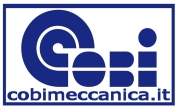

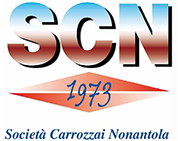

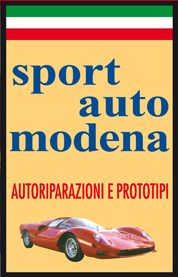

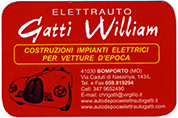

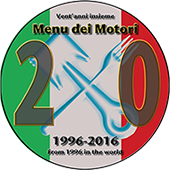
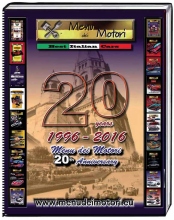 History of "Menu dei Motori"
History of "Menu dei Motori"
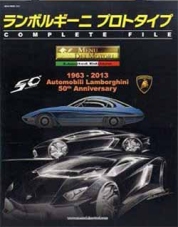
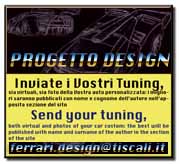 DESIGN PROJECT
DESIGN PROJECT UNIVERSITA' DI MODENA
UNIVERSITA' DI MODENA

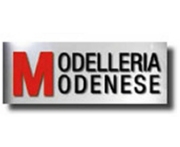



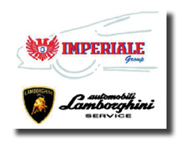
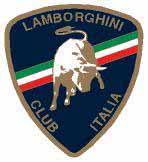
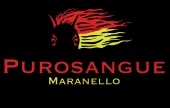
Comments
Nessun commento presente
Add Comment